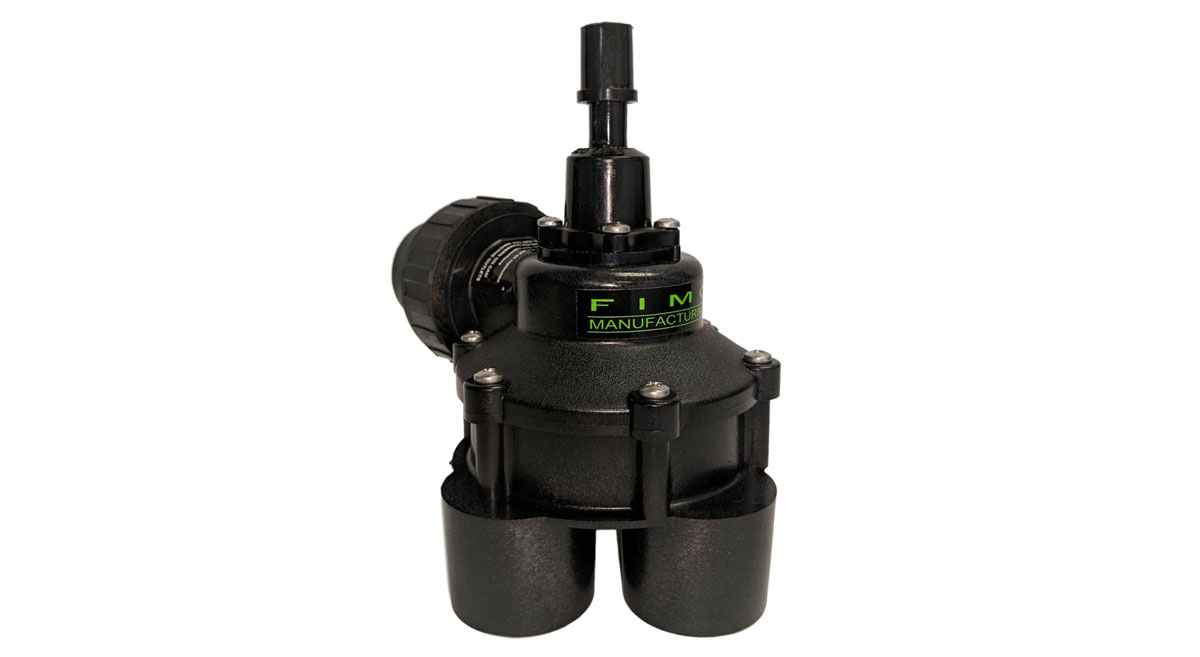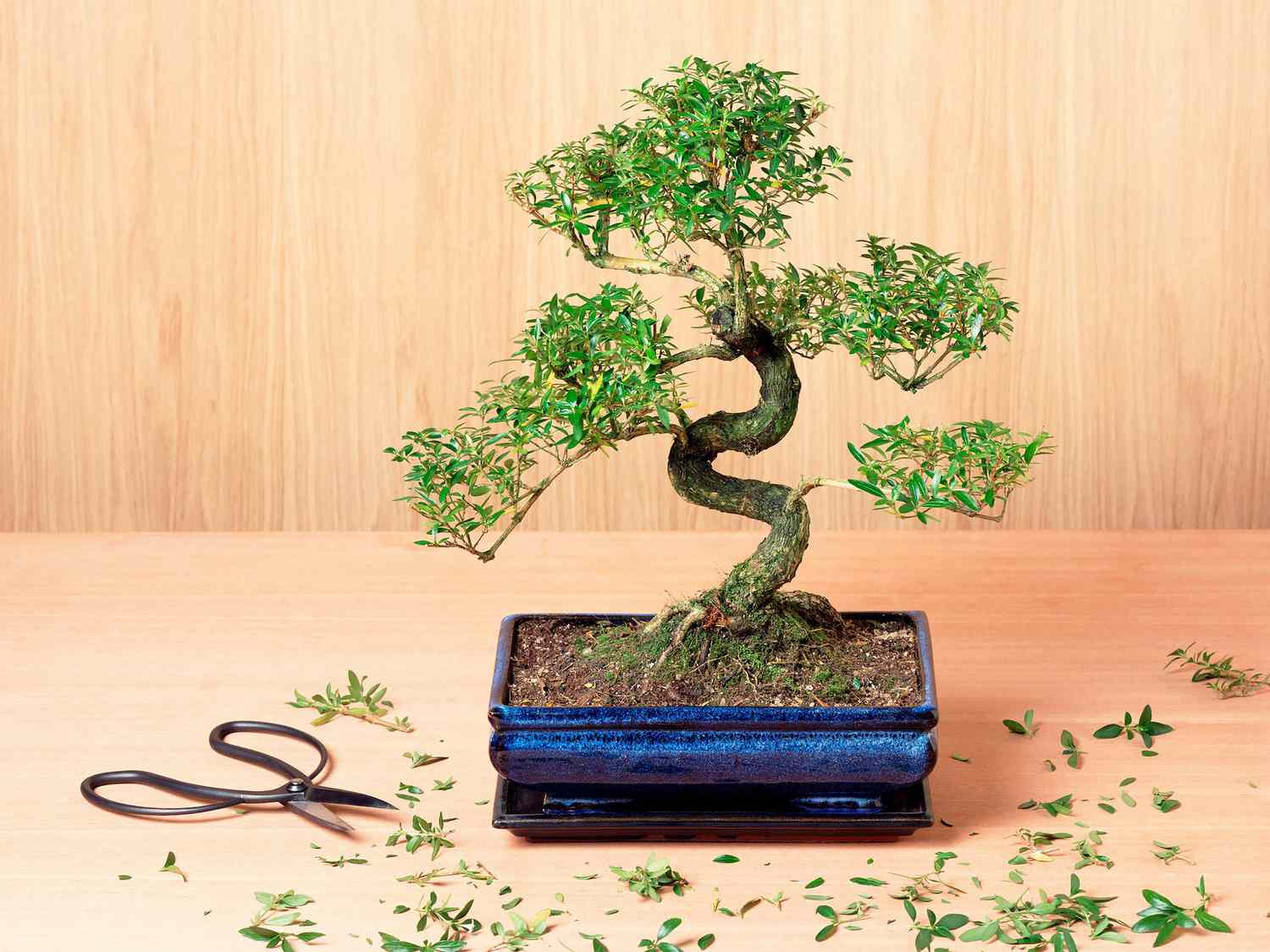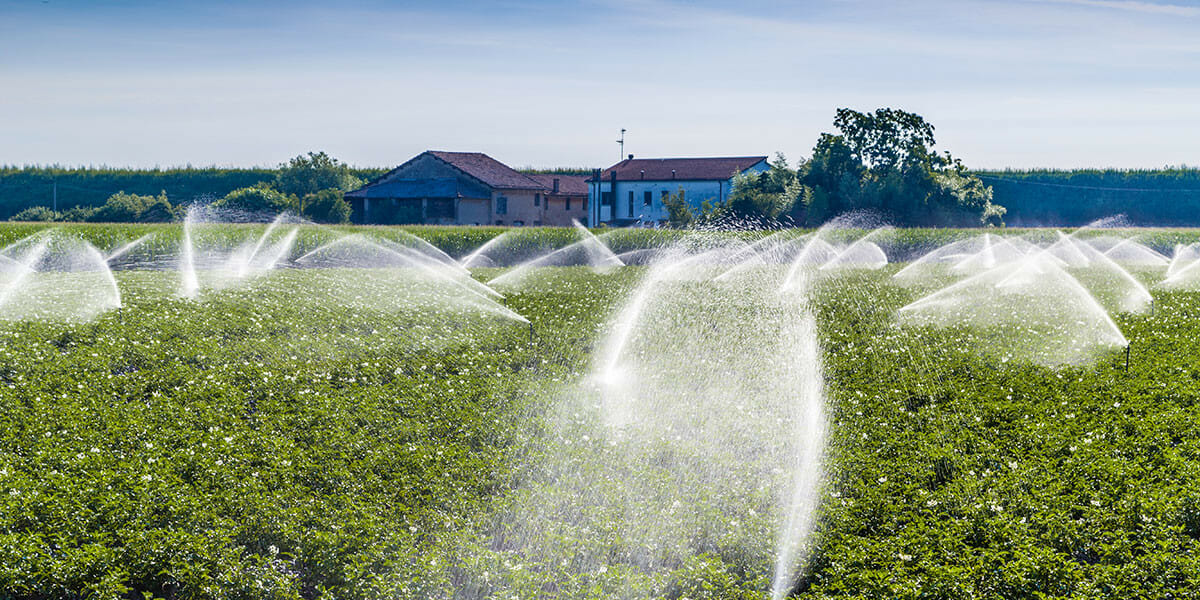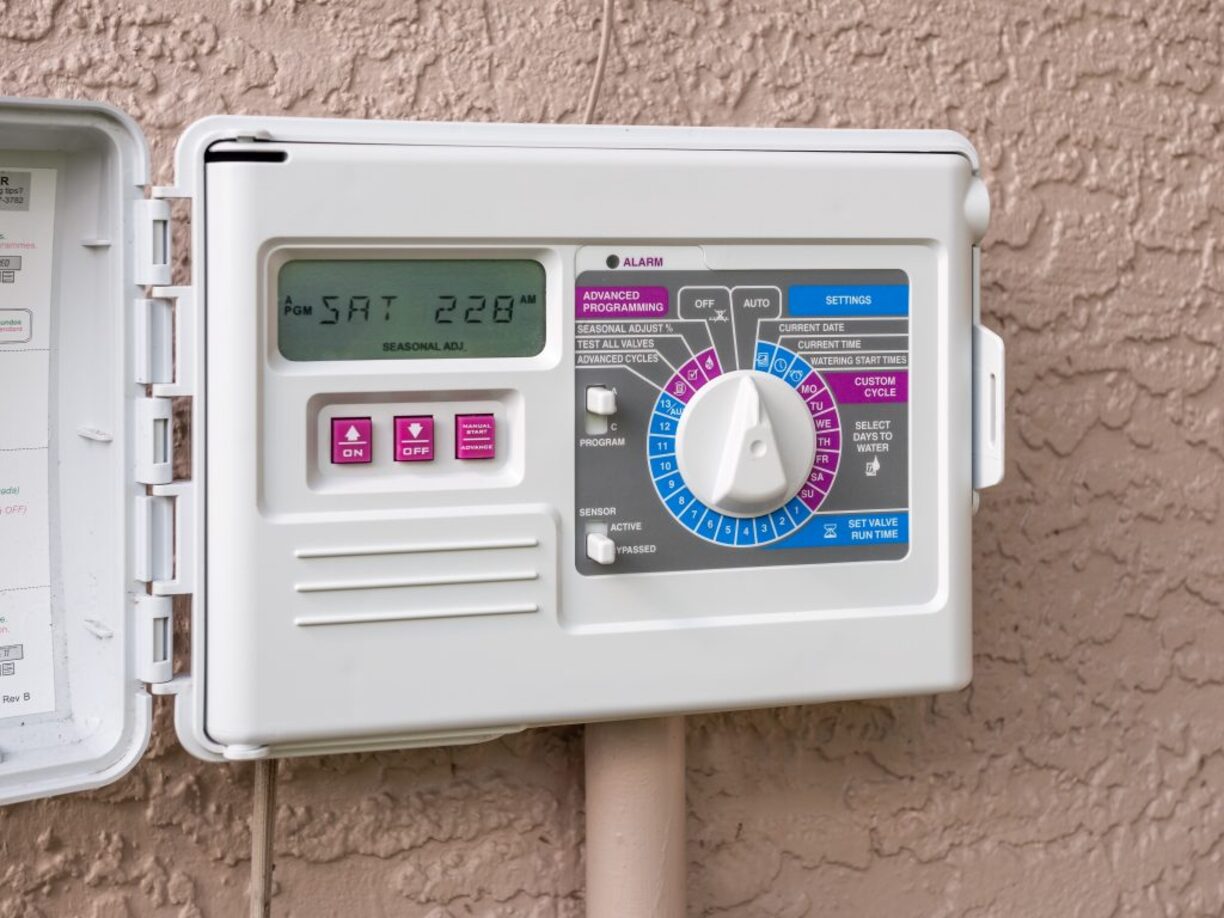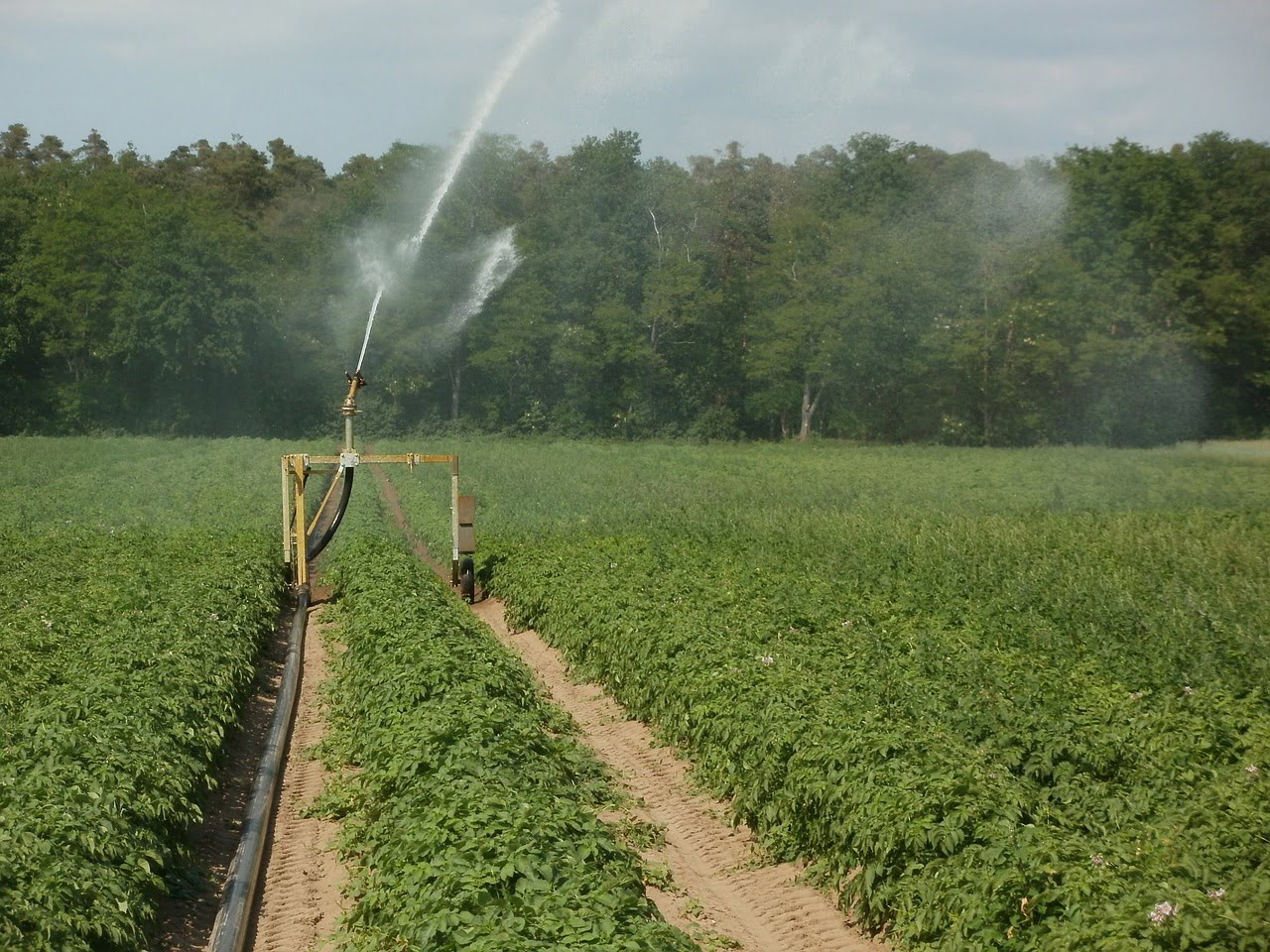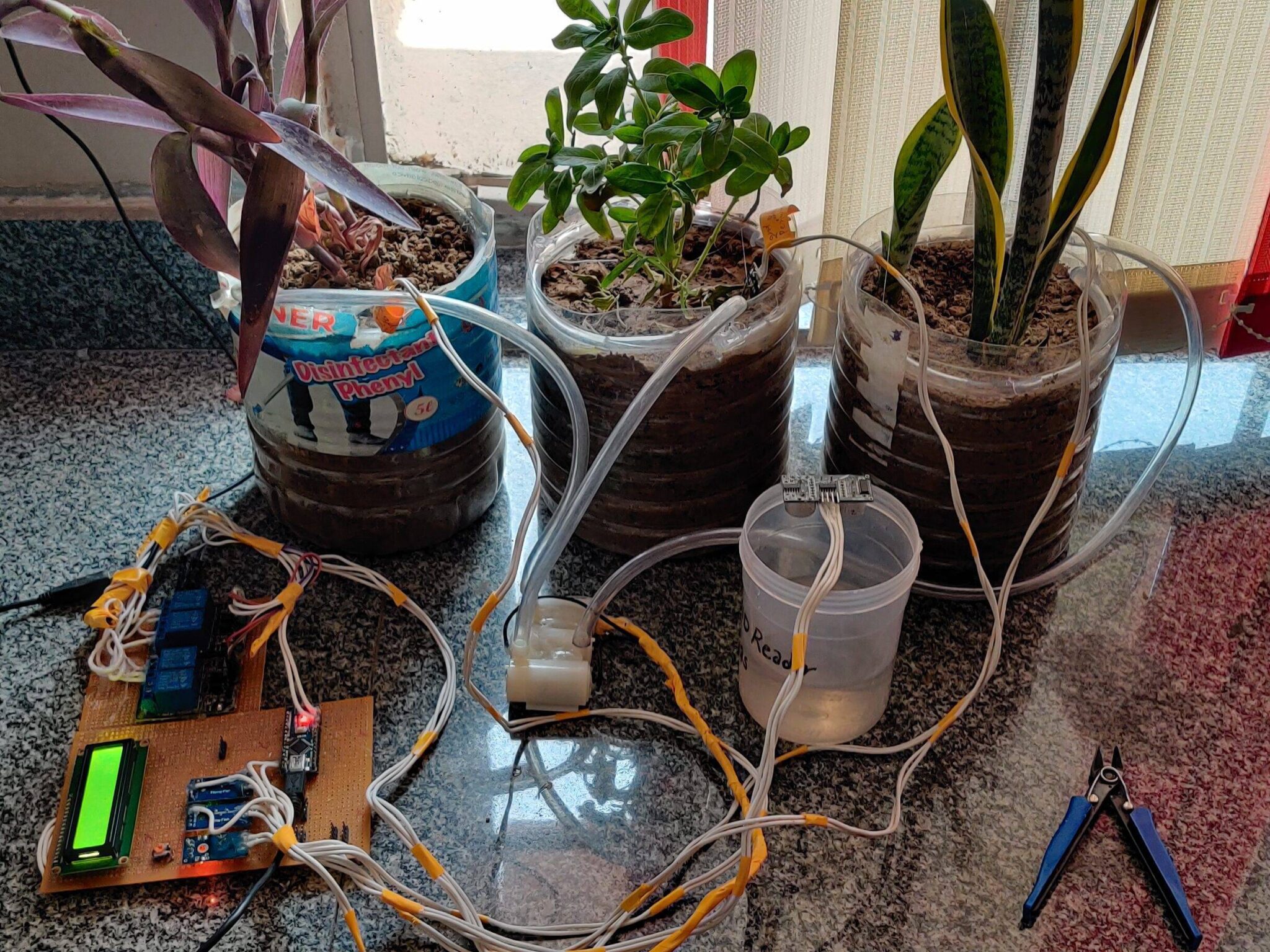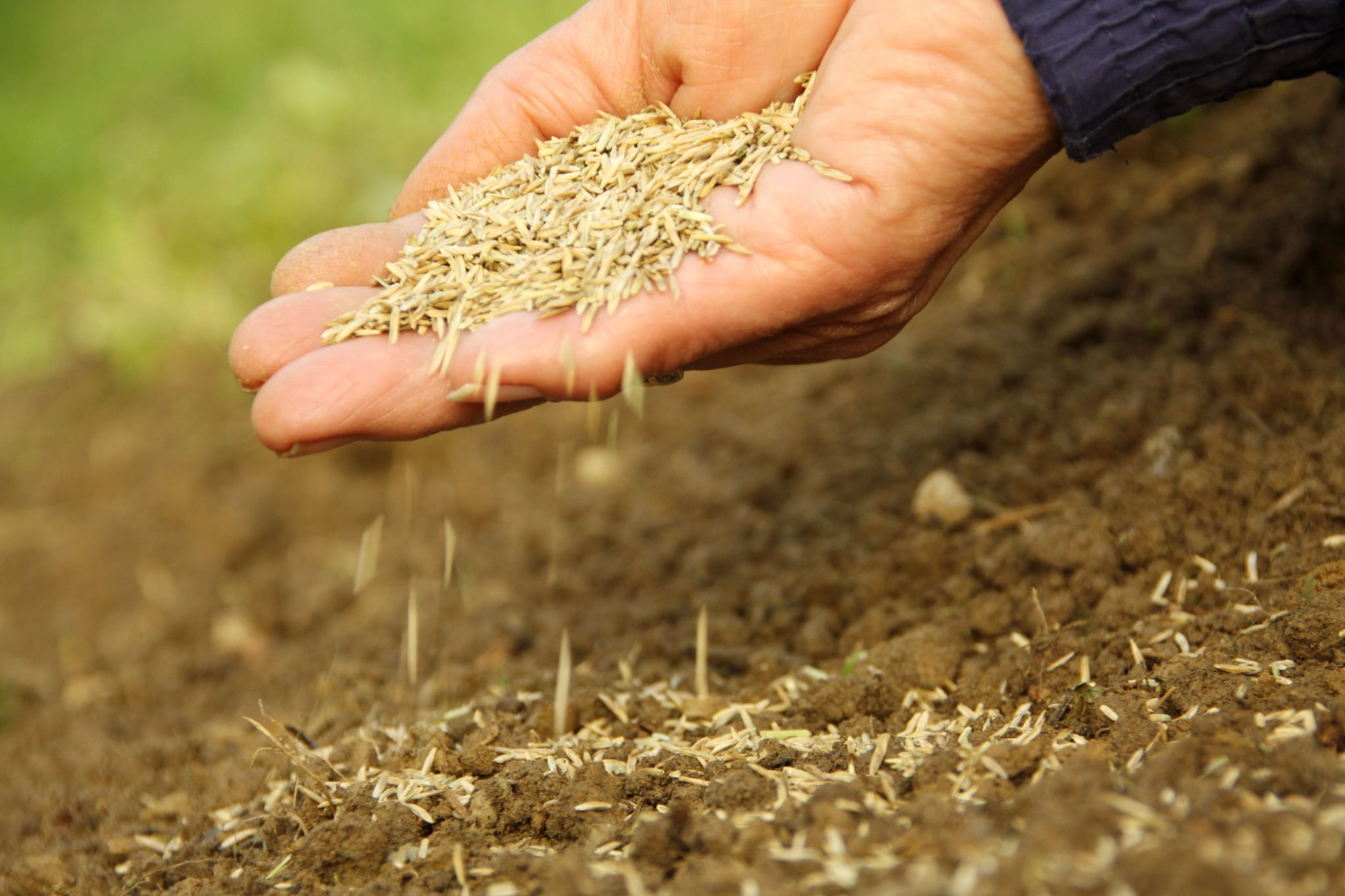Home>Gardening Basics>Tools and Equipment>How Do Automatic Irrigation Systems Work


Tools and Equipment
How Do Automatic Irrigation Systems Work
Modified: January 22, 2024
Discover how automatic irrigation systems work and the essential tools and equipment required for efficient watering.
(Many of the links in this article redirect to a specific reviewed product. Your purchase of these products through affiliate links helps to generate commission for Chicagolandgardening.com, at no extra cost. Learn more)
Table of Contents
- Introduction
- Components of an Automatic Irrigation System
- Types of Automatic Irrigation Systems
- Working Principle of Automatic Irrigation Systems
- Benefits of Using Automatic Irrigation Systems
- Factors to Consider When Installing an Automatic Irrigation System
- Maintenance and Troubleshooting Tips for Automatic Irrigation Systems
- Conclusion
Introduction
Welcome to the world of automatic irrigation systems, where technology meets gardening to simplify the process of keeping your plants healthy and thriving. Gone are the days of manual watering with a hose or sprinkler; with automatic irrigation systems, you can sit back and relax while your garden receives the precise amount of water it needs.
An automatic irrigation system is a sophisticated setup that uses a network of pipes, valves, sensors, and timers to deliver water to plants on a predetermined schedule. Whether you have a small garden or a sprawling landscape, these systems provide convenience, efficiency, and improved plant health.
With an automatic irrigation system, you no longer have to worry about under-watering or over-watering your plants. These systems are designed to deliver water directly to the root zone, ensuring that plants receive the right amount of moisture without wastage. The use of timers and sensors allows you to set specific watering intervals and adjust them according to weather conditions.
Not only do automatic irrigation systems save you time and effort, but they also promote water conservation. By delivering water directly to the plants, these systems minimize evaporation and runoff, reducing water wastage and the need for frequent watering.
In this article, we will delve into the components, types, working principle, benefits, and maintenance of automatic irrigation systems. Whether you’re a seasoned gardener or a beginner, this guide will provide you with the knowledge you need to make an informed decision about incorporating an automatic irrigation system into your gardening routine.
So, let’s dive in and explore the world of automatic irrigation systems, and discover how they can revolutionize the way you care for your plants.
Components of an Automatic Irrigation System
An automatic irrigation system consists of several key components that work together to efficiently distribute water to your plants. Understanding these components will help you make informed decisions when designing and installing your irrigation system:
- Main Water Supply: This is the source of water for your irrigation system. It can be connected to your home’s water supply or a separate water source such as a well or rainwater harvesting system.
- Control Panel: The control panel is the brain of your irrigation system. It houses the timers, valves, and sensors that regulate the operation of the system. Modern control panels often have user-friendly interfaces and programmable settings.
- Valves: Valves are used to control the flow of water within the irrigation system. There are two main types of valves: the main control valve, which controls the overall water supply, and zone valves, which regulate the flow of water to specific areas or zones within your garden.
- Sprinklers or Drip Emitters: Sprinklers or drip emitters are used to distribute water to your plants. Sprinklers are commonly used for larger areas, while drip emitters are ideal for precise watering of individual plants or rows.
- Pipes and Tubing: Pipes and tubing carry water from the water supply to the sprinklers or drip emitters. PVC pipes are commonly used for main lines, while flexible tubing, such as polyethylene or drip tubing, is used for smaller branches or zone lines.
- Sensors: Sensors are optional but highly beneficial components in an automatic irrigation system. They monitor environmental conditions such as soil moisture, rainfall, temperature, and humidity. This data helps the system adjust watering schedules based on actual plant needs and reduces water waste.
- Backflow Preventer: A backflow preventer is a safety device that prevents water from flowing back into the main water supply. It protects against contamination, ensuring that the water used in your irrigation system is safe.
- Rain Sensor: A rain sensor is another optional component that detects rainfall and temporarily suspends irrigation when it’s not required. This feature prevents overwatering and conserves water.
By understanding the different components of an automatic irrigation system, you can customize your setup to suit the specific needs of your garden. From controlling the water supply to distributing it efficiently, these components work together to create an automated watering system that ensures your plants receive the right amount of water at the right time, promoting healthy growth and reducing water waste.
Types of Automatic Irrigation Systems
Automatic irrigation systems come in various types, each suited for different garden sizes, plant types, and water distribution methods. Here are some common types of automatic irrigation systems:
- Sprinkler Systems: Sprinkler systems are one of the most popular types of automatic irrigation systems. They use sprinkler heads positioned strategically throughout the garden to distribute water in a circular or fan-shaped pattern. Sprinkler systems are suitable for medium to large-sized gardens and can cover a wide area efficiently.
- Drip Irrigation Systems: Drip irrigation systems are ideal for gardens with individual plants or closely spaced plantings. This method involves the use of drip emitters, which deliver a slow, steady flow of water directly to the root zone of each plant. Drip irrigation systems are highly efficient, as they minimize water loss through evaporation and runoff.
- Micro Spray Systems: Micro spray systems use a combination of sprinkler heads and spray nozzles to distribute water in fine droplets over a specific area. These systems are commonly used in flower beds, shrubbery, and small gardens where a more localized water application is desired.
- Rotating Head Systems: Rotating head systems, also known as rotary sprinklers, have rotating nozzles that disperse water in a rotating motion. This type of system is suitable for large areas and can provide even water distribution with adjustable spray patterns.
- Soaker Hose Systems: Soaker hose systems consist of porous hoses that release water slowly and evenly along their entire length. These hoses are typically laid on the ground or buried just below the soil surface, delivering water directly to the root zone of plants. Soaker hose systems are ideal for gardens with rows of plants or hedges.
Each type of automatic irrigation system has its advantages and is suited for specific applications. Consider factors such as garden size, plant type, water requirements, and soil conditions when choosing the right system for your needs. Consulting with a professional or local garden center can also provide valuable guidance on selecting the most appropriate system for your garden.
Remember, the goal is to achieve efficient water distribution while minimizing water waste. By selecting the right type of automatic irrigation system, you can ensure that your plants receive the optimal amount of water, leading to healthy growth and lush, vibrant gardens.
Working Principle of Automatic Irrigation Systems
Automatic irrigation systems operate on a well-defined principle that ensures plants receive the right amount of water at the right time. The working principle of these systems can be broken down into the following key steps:
- Water Supply Activation: The system is activated when the control panel receives a signal to start irrigating. This signal can be triggered manually or scheduled using timers or sensors.
- Valve Opening: Once activated, the control panel sends a signal to the valves to open. The main control valve and zone valves open to allow water to flow through the pipes and tubing.
- Water Distribution: The water flows through the pipes and tubing to reach the sprinklers or drip emitters. In the case of sprinkler systems, the water is emitted in the form of droplets or a spray pattern. In drip irrigation systems, the water seeps out of the emitters and drips directly onto the soil around the plants.
- Proper Timing and Duration: The control panel regulates the timing and duration of the irrigation cycle based on pre-set schedules or information from sensors. This ensures that plants receive water at specific intervals and for the appropriate duration, taking into account factors such as plant type, soil moisture levels, and weather conditions.
- Water Shut-off: Once the scheduled watering is complete or the system detects sufficient moisture level, the valves close, stopping the flow of water. This prevents overwatering and conserves water.
The working principle of automatic irrigation systems is based on precision and efficiency. By delivering water directly to the root zone of plants and controlling the timing and duration of watering, these systems optimize water usage and ensure that plants receive the right amount of moisture for healthy growth.
In recent years, advanced technologies have been integrated into automatic irrigation systems, offering additional features such as rain sensors and smart controllers. Rain sensors detect rainfall and temporarily suspend irrigation to prevent unnecessary watering, while smart controllers use data from weather stations to adjust watering schedules dynamically based on current environmental conditions. These advancements further enhance the efficiency and effectiveness of automatic irrigation systems.
By understanding the working principle of automatic irrigation systems, you can make the most of these sophisticated setups and provide optimum care for your plants while conserving water resources.
Benefits of Using Automatic Irrigation Systems
Automatic irrigation systems offer numerous benefits for homeowners and gardeners who want to simplify their watering routine and maintain healthy, thriving plants. Here are some key advantages of using automatic irrigation systems:
- Convenience: One of the primary benefits of automatic irrigation systems is the convenience they provide. With these systems in place, you no longer have to spend time manually watering your plants. The system takes care of watering on a pre-set schedule, allowing you to focus on other tasks or enjoy your free time.
- Water Efficiency: Automatic irrigation systems are designed to deliver water directly to the root zone of plants and minimize evaporation and runoff. This targeted approach ensures that plants receive the right amount of water without wasting it. By reducing water wastage, automatic irrigation systems contribute to water conservation efforts.
- Precise Watering: Different types of plants have varied water requirements. Automatic irrigation systems allow you to customize the watering schedule based on the specific needs of your plants. Whether you have a garden with different plant species or specific areas with varying water requirements, these systems provide precise watering control for optimal plant health.
- Time Savings: With an automatic irrigation system, you no longer need to spend time manually watering your plants. This time-saving benefit is especially valuable when you have a large garden or when you’re away from home. You can travel without worrying about your plants suffering from lack of water, as the system will continue to care for them in your absence.
- Improved Plant Health: Consistent and adequate watering is crucial for the health and survival of plants. Automatic irrigation systems provide a reliable water source, ensuring that plants receive water on a regular basis. This promotes healthy growth, reduces stress on plants, and increases their ability to resist diseases and pests.
- Flexibility: Automatic irrigation systems offer flexibility in scheduling and control. Many systems allow you to program different watering zones and adjust watering intervals based on specific requirements. Some systems also offer remote access capabilities, enabling you to control the irrigation system using smartphone apps or web-based interfaces.
- Increased Property Value: A well-maintained garden with an efficient automatic irrigation system can boost the value of your property. Potential buyers appreciate the convenience and benefits that come with an automated watering system, making it an attractive feature when selling your home.
By incorporating an automatic irrigation system into your gardening routine, you can enjoy the convenience, efficiency, and numerous benefits they provide. From time savings to water conservation and improved plant health, these systems are a worthwhile investment for any homeowner or gardener looking to optimize their watering process.
Factors to Consider When Installing an Automatic Irrigation System
Installing an automatic irrigation system requires careful planning and consideration to ensure optimal performance and efficiency. Here are some important factors to keep in mind when installing an automatic irrigation system:
- Garden Size and Layout: The size and layout of your garden will determine the type and configuration of the irrigation system. Consider the overall area to be covered, as well as any slopes, obstacles, or irregularly shaped areas.
- Plant Types and Watering Needs: Different plants have varying water requirements. Take into account the types of plants in your garden and their specific watering needs. Some plants may require more frequent watering, while others prefer drier conditions. Design the system to accommodate these different watering requirements.
- Water Source and Pressure: Assess the availability of your water source and its pressure. If connecting to a municipal water supply, check the pressure level to ensure it is sufficient for the irrigation system. Alternatively, if using a well or rainwater harvesting system, consider the water capacity and filtration requirements.
- Climate and Weather Conditions: Understand the climate and weather patterns in your area. Take into account factors such as rainfall levels, temperature fluctuations, and evaporation rates. This information will help determine the frequency and duration of watering cycles needed for your specific garden.
- Sensors and Controllers: Consider incorporating sensors and controllers into your automatic irrigation system. Soil moisture sensors, rain sensors, and weather-based controllers can provide valuable data to optimize watering and conserve water based on real-time conditions.
- Installation and Maintenance Costs: Estimate the installation and maintenance costs associated with the irrigation system. This includes the cost of materials, professional installation (if required), and ongoing maintenance such as system checks, valve adjustments, and occasional repairs.
- Local Regulations and Water Restrictions: Familiarize yourself with any local regulations or water restrictions that may apply to your area. Ensure that your automatic irrigation system adheres to these regulations and can be adjusted to comply with any imposed watering restrictions.
- Future Expansion and Flexibility: Consider future expansion and flexibility in your irrigation system design. Plan for any potential changes or additions to your garden, such as new planting areas or landscaping features, and ensure that the system can accommodate these modifications.
Taking these factors into account during the installation process will help you design an efficient and effective automatic irrigation system that meets the specific needs of your garden. It is also advisable to consult with professionals who specialize in irrigation system installation and maintenance to ensure proper design and functionality of the system.
Maintenance and Troubleshooting Tips for Automatic Irrigation Systems
Maintaining an automatic irrigation system is essential to keep it running smoothly and ensure the health of your plants. Regular maintenance and troubleshooting can help prevent issues and address any problems that may arise. Here are some tips to help you maintain and troubleshoot your automatic irrigation system:
- Regular Inspections: Conduct regular inspections of your irrigation system to check for any leaks, clogs, or damaged components. Inspect the pipes, tubing, valves, and sprinklers or emitters to ensure they are in good condition and functioning properly.
- Clean Filters and Sprinklers: Clean or replace filters regularly to prevent clogs and ensure proper water flow. Clean sprinkler heads or emitters to remove any debris or mineral buildup that can affect their performance. This will help maintain even water distribution and prevent blockages.
- Adjust Sprinkler Heads: Periodically check and adjust the direction and coverage of sprinkler heads to ensure they are watering the intended area. This is particularly important if new plants have been added or landscaping has changed.
- Check Timer and Controller: Test the timer and controller to ensure they are functioning correctly. Verify that the programming is accurate and that the watering schedule aligns with the needs of your plants. Replace batteries in battery-powered timers as needed.
- Monitor Soil Moisture: Keep an eye on the moisture level in your garden by regularly checking the soil. Use a soil moisture sensor or simply dig into the soil to determine if watering is needed. Adjust the watering schedule accordingly to avoid overwatering or underwatering.
- Inspect and Adjust Valves: Check the valves to ensure they are opening and closing properly. Adjust the flow control on zone valves as needed to achieve the desired water pressure and distribution. Replace any faulty valves to prevent water leakage and wastage.
- Monitor and Respond to Weather Changes: Pay attention to weather changes and adjust your irrigation system accordingly. If heavy rain is forecasted, temporarily deactivate the system or reduce the watering duration to avoid overwatering. Ensure that rain sensors and weather-based controllers are working properly.
- Winterization and Seasonal Maintenance: Prior to winter, ensure proper winterization of your irrigation system to protect it from freezing temperatures. Drain water from the system, insulate exposed pipes, and shut off the main water supply. In spring, conduct a thorough check and maintenance to prepare the system for the upcoming watering season.
- Document and Keep Records: Keep a record of irrigation system maintenance, repairs, and adjustments. This documentation will help you identify recurring issues, track efficiency, and schedule regular maintenance tasks.
If you encounter persistent issues with your automatic irrigation system, consider seeking the assistance of a professional irrigation technician. They can identify and resolve complex problems, provide recommendations for improvements, and ensure that your system is functioning optimally.
By following these maintenance and troubleshooting tips, you can keep your automatic irrigation system in excellent condition, promote plant health, and prolong the lifespan of your system.
Conclusion
Automatic irrigation systems have revolutionized the way we care for our gardens and landscapes. With their convenience, efficiency, and precision, these systems offer numerous benefits for homeowners and gardeners.
By understanding the components, types, working principle, and maintenance of automatic irrigation systems, you can make informed decisions when designing, installing, and maintaining your own system. Consider factors such as garden size, plant types, water source, climate, and future expansion when selecting the appropriate system for your needs.
Automatic irrigation systems provide the convenience of automated watering, freeing up your time and ensuring that your plants receive the right amount of water at the right time. Their water efficiency promotes conservation and helps prevent overwatering or underwatering.
With precise watering control, these systems contribute to improved plant health and increased property value. They offer flexibility through programmable controllers, sensors, and customizable zones to accommodate different plant types and watering requirements.
Maintaining your automatic irrigation system is crucial for its optimal performance. Regular inspections, cleaning filters and sprinklers, adjusting sprinkler heads, and monitoring soil moisture are key maintenance practices. Troubleshooting issues and seeking professional assistance when needed can help keep your system in top shape.
In summary, automatic irrigation systems simplify the process of watering your garden, enhance plant health, and conserve water. By harnessing the power of technology, these systems provide a convenient and efficient solution for maintaining lush, vibrant gardens with minimal effort.
